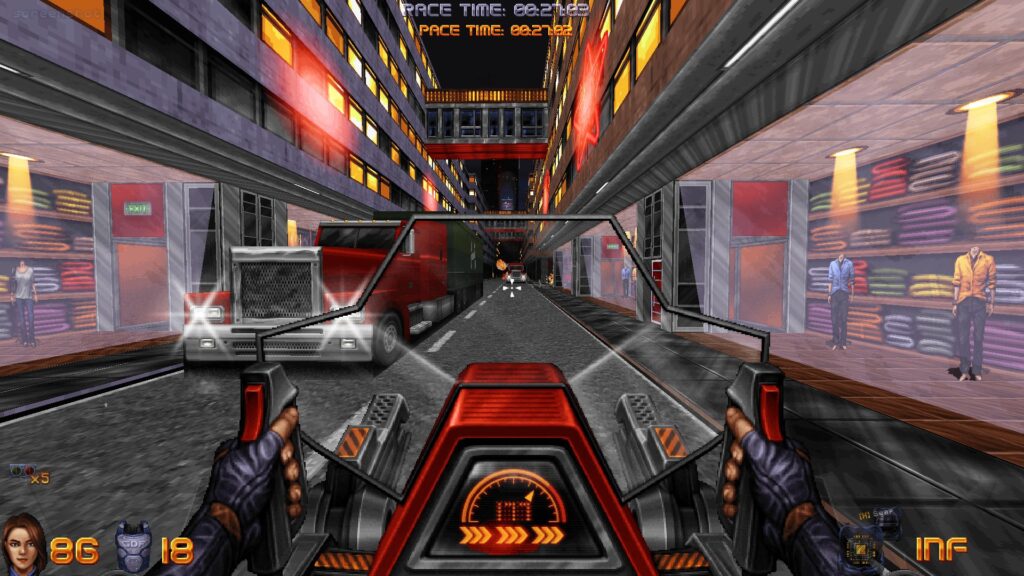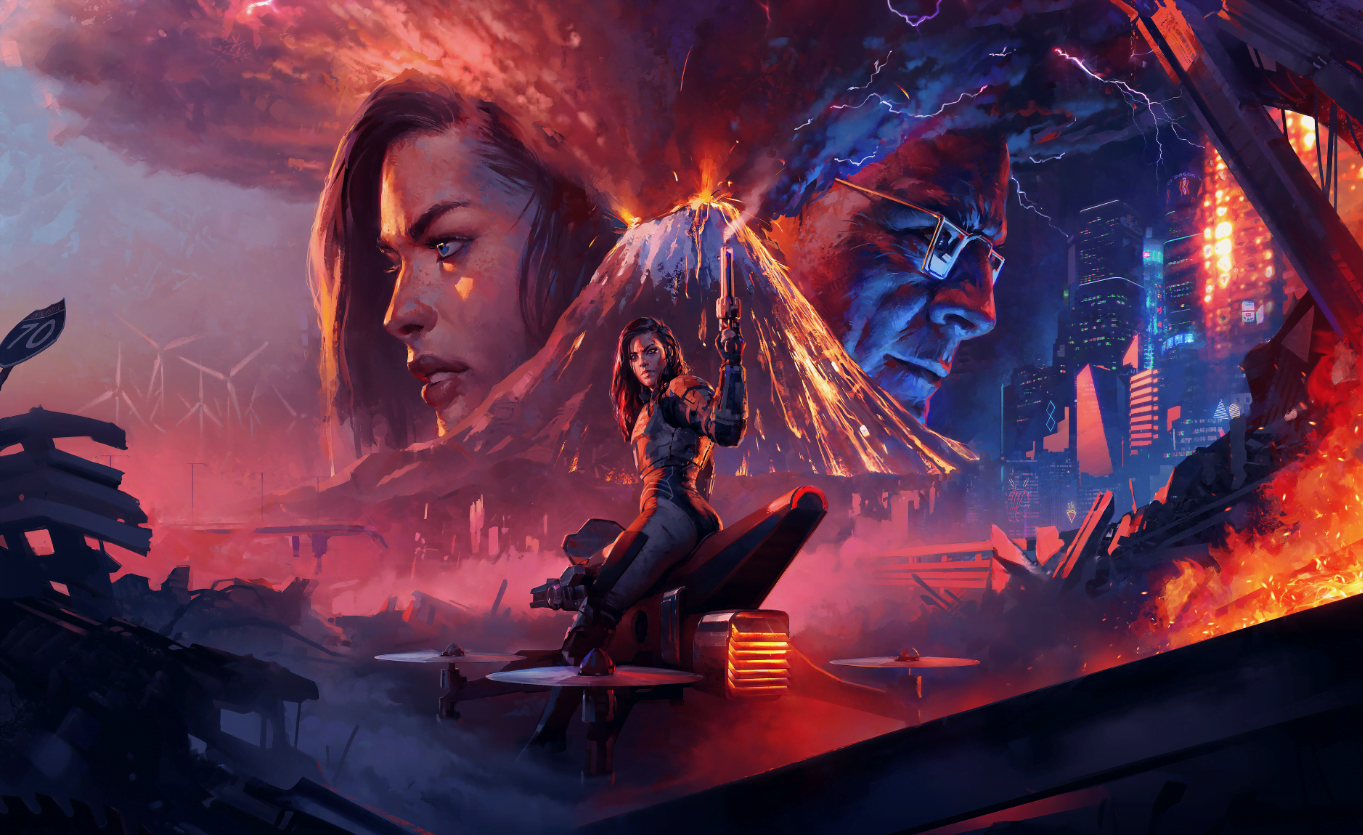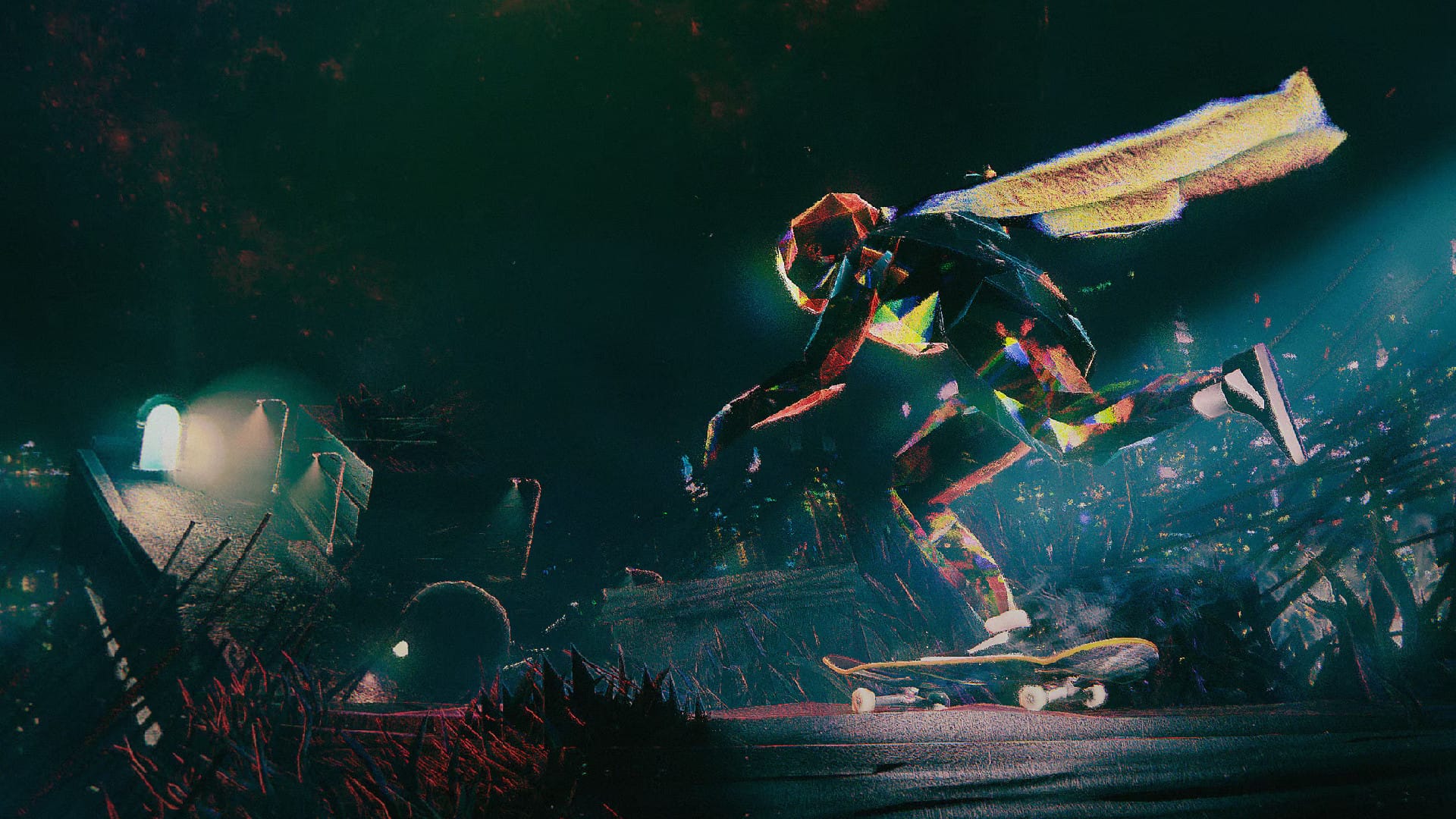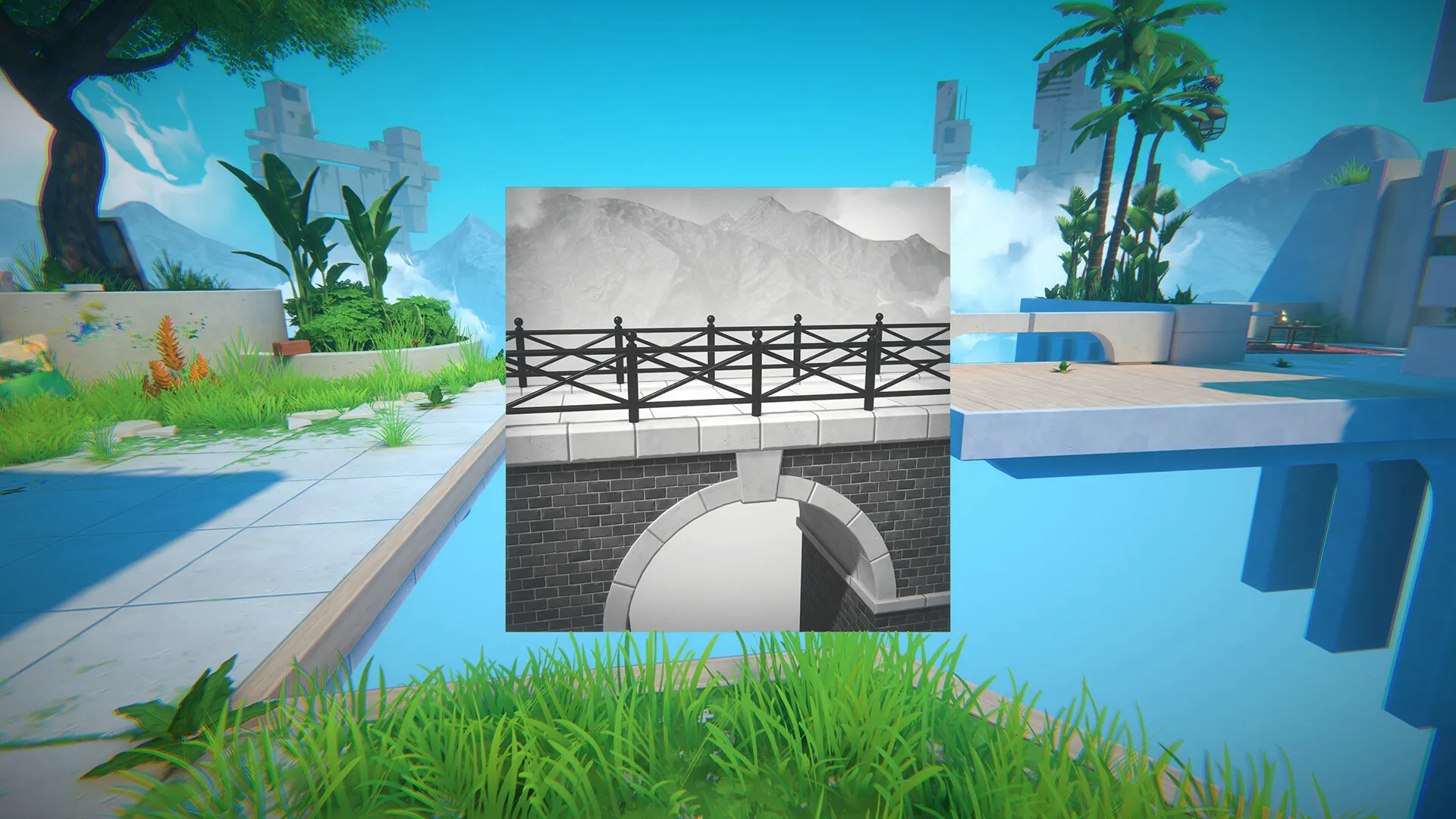Ion Fury: Aftershock was in development for so long that it began to look more like vapourware than cyberware. Indie developer Voidpoint released the original game in August 2019. At one point, it seemed as if the fully-3D sequel Phantom Fury would hit digital shelves before the expansion did. As it turned out, Aftershock appeared in a way that befits its title: with startling suddenness just when you thought it was over.
Ion Fury is a lovingly crafted throwback to the shooters of the mid-’90s. It was even made with the storied Build engine, which powered the “big three” of Duke Nukem 3D, the original Shadow Warrior, and Blood. Aftershock is a smart and sizable continuation, an expansion pack much like the ones enjoyed by those historic classics. The narrative justification is thin: mad scientist Jadus Heskel is on the loose again and Shelley “Bombshell” Harrison is the only one who can stop him and save Neo D.C.
Voidpoint is led by the main developer of the formidable EDuke32 fork of the Build engine. Ion Fury pushed Build to previously undreamed of heights, and Aftershock doubles down on this technical showboating. The developers have implemented speeding trains, thrashing machinery, and collapsing buildings. All of these splashy effects are incorporated into sprawling maps which are even more packed with secrets than before.

To a large extent, Ion Fury: Aftershock continues the approach to level design that the main game and the Build engine more generally are known for. These new levels deal in the same kinds of semi-realistic and mainly urban aesthetics. Voidpoint retains their usual fondness for bloody gun battles in prosaic locations like burger joints, dive bars, and shopping malls. As before, these locales are crammed with incidental details which are rich with in-jokes for ‘90s FPS aficionados.
In one of those shopping malls, Shelley acquires the tentpole new feature of Ion Fury: Aftershock – a blood-red, driveable “rotorcycle”. This moderately quick vehicle is piloted for a surprisingly lengthy sequence of levels, with occasional on-foot diversions. While an early section serves as an impromptu race against the clock, much of the rotorcycle phase of the game recalls Half-Life 2. Voidpoint riff extensively on the Water Hazard chapter of Valve’s classic, and even go as far as to stage a canal-based duel with a bomb-dropping enemy aircraft.
Other gameplay changes are mostly limited to mildly interesting new enemy and weapon variants. The tweaked foes are a little more dangerous than their vanilla counterparts, and will result in some of the usual Ion Fury insta-deaths on higher difficulties. The new ammo types are a mixed bag – the cluster shells for the disperser shotgun are a fun new option, but its gas grenades are a ponderously slow solution to non-existent problems. The only truly new weapon is the “homewrecker”, a plasma cannon which Shelley salvages from her totalled rotorcycle. With a heat-seeking ability, it shreds tough foes as fast as the ion bow’s secondary fire – but ammo is predictably scarce.

In addition to the new levels, Voidpoint have added something more unusual. The “arrange” mode is a new way to play the original Ion Fury campaign. It not only allows Shelley to battle through old locales with new toys, but also rearranges the level geometry in some cases. This offers a significantly new way to play what remains one of the best retro shooter campaigns in the business.
Aftershock is essentially just more Ion Fury, and this is an unambiguously good thing. Some may question whether this is enough, however, especially given the inordinately lengthy wait for an admittedly sizable expansion. At times, Voidpoint’s work invites unfavourable comparisons with more recent retro shooters. In particular, Shelley’s jaunt into the backwoods outside Neo D.C. recalls Cultic, but the confusing level design of this section pales in comparison to the elegant brutality of that game.
In time, Phantom Fury may yet add a notable new chapter to the series’ legacy – albeit one not developed by Voidpoint. With Ion Fury: Aftershock, the original team has expanded and improved their game. The long delay does little to dampen the appeal of this worthy continuation.





